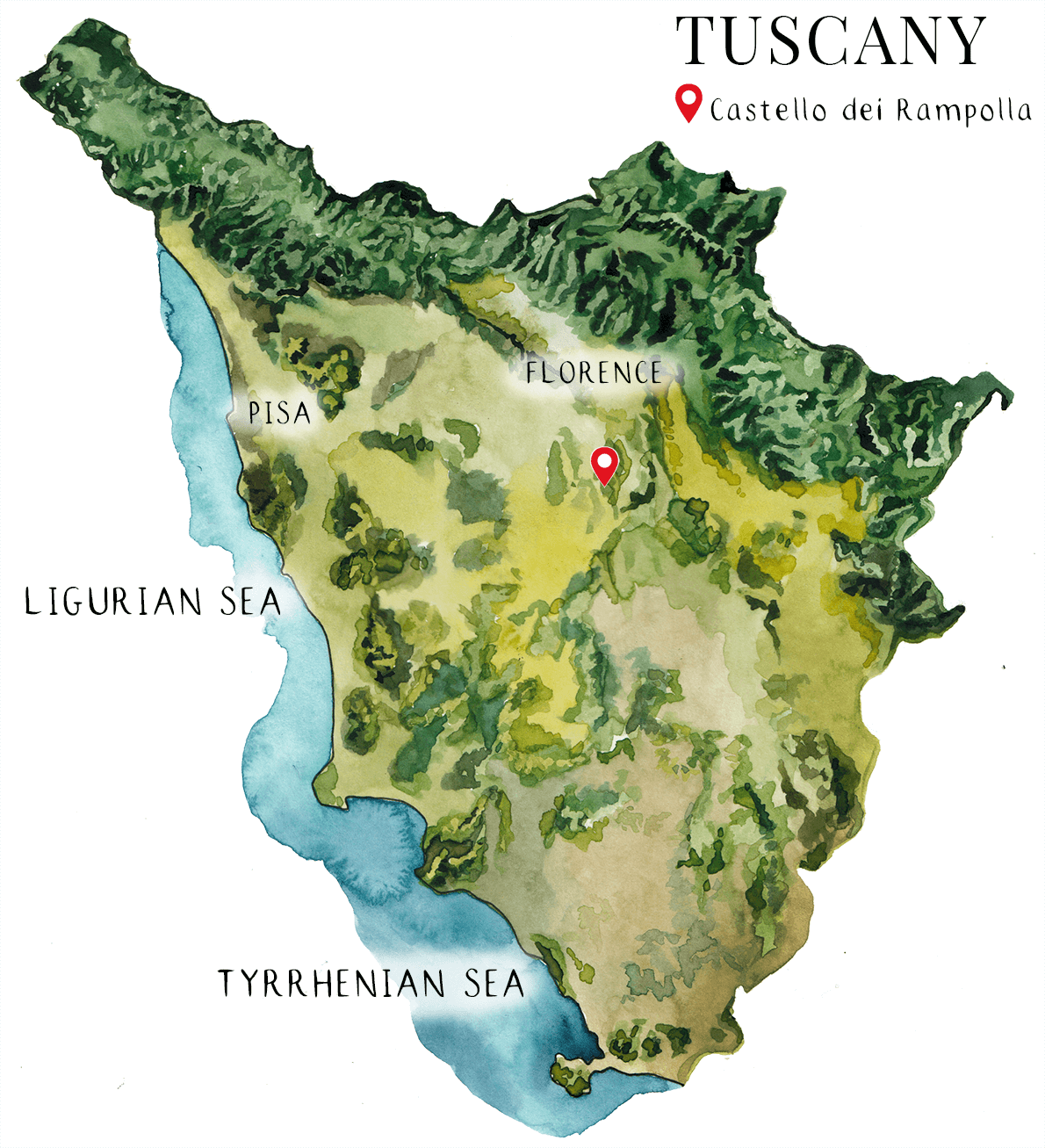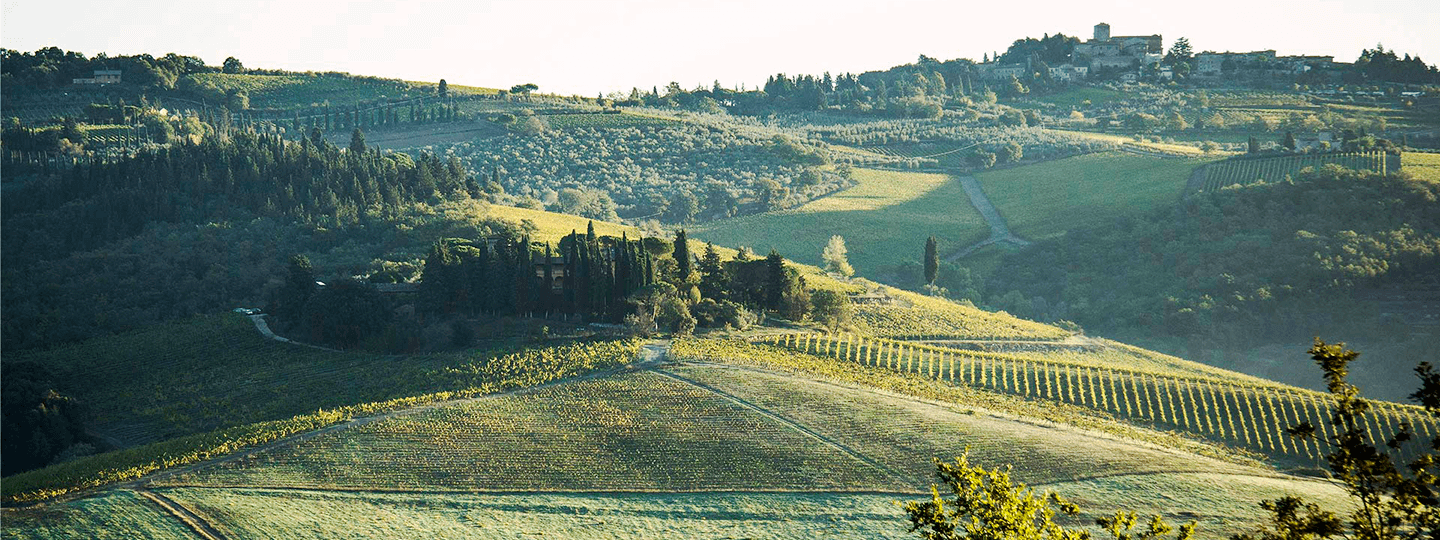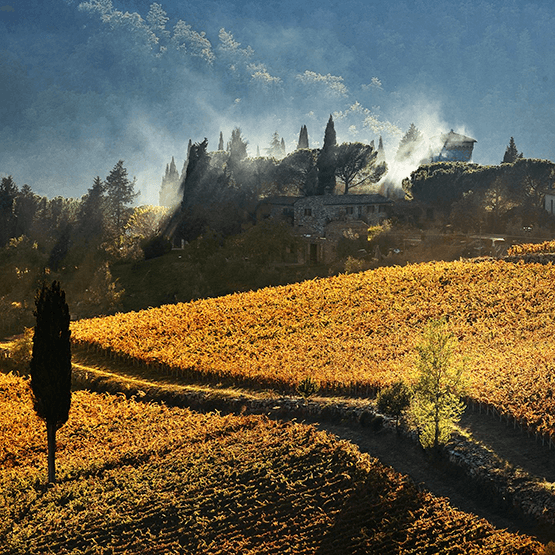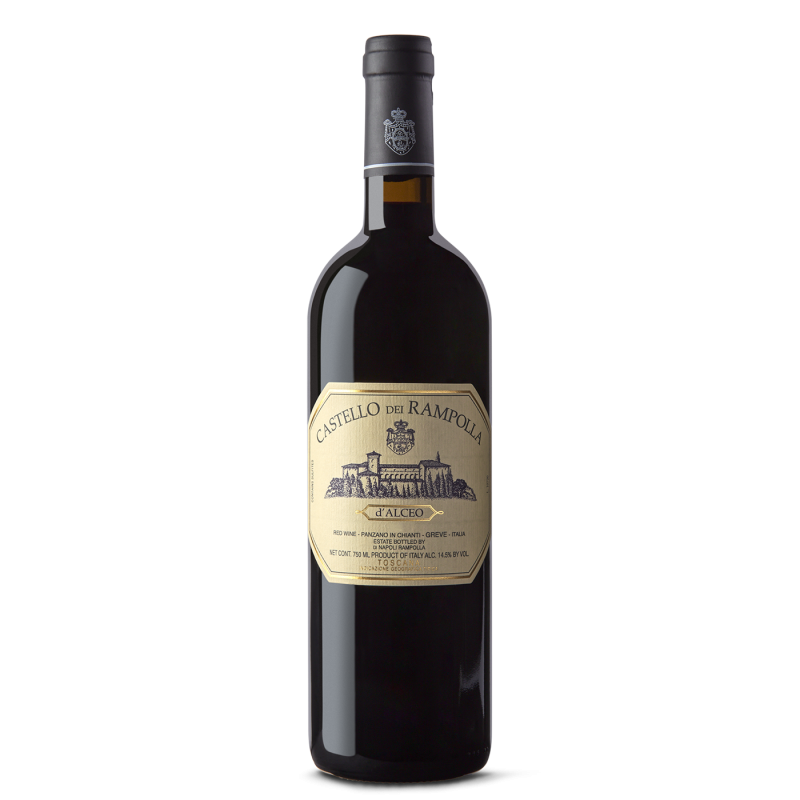Vigna d'Alceo
Palate Character
This wine is of very limited quantity. As such, the Digital Somm did not get a taste, but you can! Unfortunately, while that means there is limited detailed information and no Digital Somm recommendations associated with rating the wine, you do still receive loyalty points, so cheer up!



Castello dei Rampolla
Chianti Classico, Tuscany
The land that constitutes the estate of Castello dei Rampolla has been owned by the same family since 1739, but it was not until the 1960s that Alceo di Napoli Rampolla dreamt of making a great wine. With the help of Giacomo Tachis, the famed oenologist known as "the father of Super Tuscans,” Rampolla was one the first estates in Chianti to grow cabernet sauvignon for the purpose of blending with sangiovese.


The estate is biodynamic, where even work in the winery is done according to lunar cycles. Biodiversity is seen as critical, with flowers, grass, and even insects considered important parts of the ecosystem. Grass and herbs are allowed to grow wild in the vineyards, which they not only think brings oxygen and organic matter to the soil, but which also offers the practical benefit of retaining water and minimizing erosion.
Castello di Rampolla’s two flagship wines are a tour de force in winemaking. The Sammarco is a blend of cabernet sauvignon, while the Vigna d’Alceo is a Bordeaux blend that is a standout in Italy and beyond. Both wines are layered, with an impeccable balance of power and nuance.

